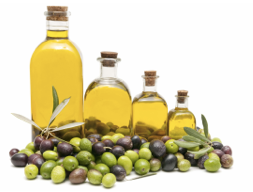Vitamin E
Consists of 8 naturally occuring tocopherols. Apparently, a-tocopherol is the most active.
Good sources: Vegetable oils, margarine, wheat germ, nuts, dark green veggies, and whole grains. Liver and eggs contain moderate amounts.
RDA: 10 mg for males and 8 mg for females. However, as your intake of polyunsaturated fatty acids goes up so does the requirement for vitamin E. Remember, the RDA is set to 20% above the level that would cause deficiency symptoms. I think most experts would recommend at least 400 mg/d.
Functions: Vitamin E is an antioxidant (see oxidative damage) that protects cell membranes and other fat-soluble compounds from oxidative damage by free radicals. For example, the oxidative damage to LDL-cholesterol appears to lead to the deposition of cholesterol in the arterial wall leading to atherosclerotic disease. In the past few years many other functions of vitamin E have been clarified. Alpha-tocopherol has direct effect on the control of inflammation, red and white blood cell production, connective tissue growth and genetic control of cell division. Vitamin E acts to reduce free radical damage by converting arachidonic acid is converted to pro-inflammatory (12-HPETE) derivatives. In deficiencies of vitamin E, arachidonic acid is converted to pro-inflammatory leukotrienes and cytokines. In neutralizing free radicals, vitamin E is oxidized to a free radical. Conversion back to the reduced form occurs by reaction with vitamin C (ascorbate).
Deficiency: Almost exclusively limited to premature infants. When it is seen in adults it is usually due to problems with lipid absorption. Symptoms include RBC sensitivity to peroxides and damaged cellular membranes. This is probably due to vitamin E’s antioxidant, protective role.
The principle use of vitamin E is an antioxidant in the protection against heart disease, cancer, stroke and neurodegenerative disease (Alzheimer’s). In addition, alpha-tocopherol supplementation is useful in treating other cardiovascular diseases, diabetes, fibrocystic breast disease, menopause symptoms and tardive dyskinesia. It may also have applications in Parkinson’s Disease and arthritis. Vitamin E is important to immune function, protecting thymic function and white blood cells from oxidative stress.
Symptoms of vitamin E deficiency include nerve damage, muscle weakness, poor coordination, involuntary eye movements, red blood cell fragility, anemia and retrolental fibroplasia (eye disease).
Toxicity: Almost impossible! No toxicity has been noted even at doses 10,000 times the RDA.







